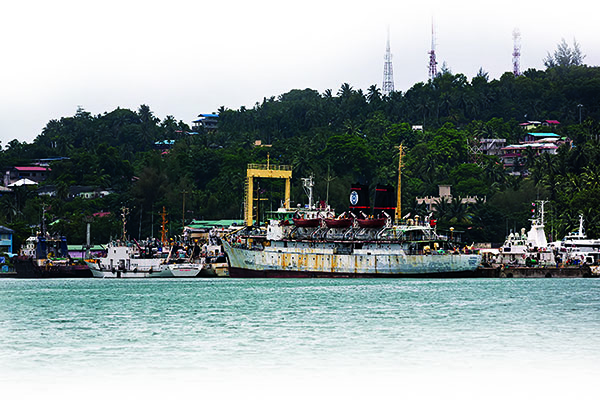 What is the present status of the new Andaman and Nicobar port?
What is the present status of the new Andaman and Nicobar port?Basically, there are two types of ports: major ports, which refer to central government-controlled ports and minor ports, which are under the state or are privately- owned. Any port, which has been notified under the category of major ports by the Port Trust Act 1963 is totally controlled by central law. All other ports are partly controlled by respective state governments and partly by their own administrative structure.
As far as our port concerned, it is located in a Union Territory and we have no issues of state interference in policy issues. The Ministry of Shipping is controlling our port but day-to-day functioning as well financing is being controlled by the administration of Andaman and Nicobar Islands.
Some plans have been drawn to develop South Bay (Nicobar island) as a container transhipment terminal. By the end of this month we hope to publish the Expression of Interest (EoI) for setting up our transhipment port. This is regarding container transhipment. We have ample space as the minimum depth is 36 metres and there is no need of depth enhancement. We also have a 4 km radius. We are planning to allocate this area and notifications are in the process. We are planning to allow the bulk cargo transhipment and liquid cargo transhipment for this location near Port Blair.
There is one more site slightly north of Port Blair where we have around 18 m depth. Here we plan to facilitate those who want transhipment but do not require much space. The third spot can only accommodate vehicles with maximum 15 metres draft. Already, the proposals for bulk cargo, liquid cargo and gaseous cargo are in the pipeline.
Actually, our location is advantageous because of its proximity to Malacca Strait, which has the highest shipping traffic density in the world. Because of safety concerns, the vessels, which may avoid Singapore, are likely to come to us. We are hopeful since we have plans to provide bunkers and space for cargo and container transhipment. We expect to woo a significant amount of sea traffic because of our location, which precedes the Malacca Strait. Through our port, we can service the entire eastern coast along with Myanmar, Bangladesh and some parts of Thailand. That is our strategic advantage.
As far as operational efficiency is concerned, the turnaround time is three days as of date, which is almost at par with other Indian ports. We are trying to reduce it to two days. We are also planning to introduce a single window system by end of this year.
The natural topographical conditions are favourable. Our port needs to be marketed and we are focusing on that.
A. The first thing we must note is that the land is scarce here because it is an island. However, it is not that the government is not interested. The government is very interested but they want to bring in industries, which will be non-polluting. In that respect, I can say that in future, there may be reprocessing and fishery-based industries.
Add new comment